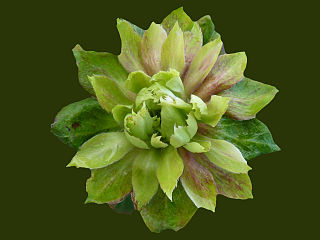You are here
Magnoliopsida
Rosa chinensis Jacq.
EOL Text
Barcode of Life Data Systems (BOLDS) Stats
Public Records: 5
Specimens with Barcodes: 5
Species With Barcodes: 1
United States
Rounded National Status Rank: NNA - Not Applicable
| License | http://creativecommons.org/licenses/by-nc/3.0/ |
| Rights holder/Author | NatureServe |
| Source | http://explorer.natureserve.org/servlet/NatureServe?searchName=Rosa+chinensis |
Rounded Global Status Rank: GNR - Not Yet Ranked
| License | http://creativecommons.org/licenses/by-nc/3.0/ |
| Rights holder/Author | NatureServe |
| Source | http://explorer.natureserve.org/servlet/NatureServe?searchName=Rosa+chinensis |
Rosa chinensis (Chinese name: 月季, pinyin: yueji), known commonly as the China Rose, is a member of the genus Rosa native to Southwest China in Guizhou, Hubei, and Sichuan Provinces. The species is extensively cultivated as an ornamental plant, originally in China, and numerous cultivars have been selected which are known as the China roses. It has also been extensively interbred with Rosa gigantea to produce Rosa × odorata, and by further hybridization the Tea roses and Hybrid Tea roses.
It is a shrub growing to 1–2 m tall. The leaves are pinnate, have 3-5 leaflets, each leaflet 2.5–6 cm long and 1–3 cm broad. In the wild species (sometimes listed as Rosa chinensis var. spontanea), the flowers have five pink to red petals. The fruit is a red hip 1–2 cm diameter.
Contents
Varieties[edit]
Three varieties of the species are recognized in the Flora of China:[2]
- R. chinensis var. chinensis, originated in cultivation, with red petals
- R. chinensis var. spontanea, native to Guizhou, Hubei, and Sichuan, with red petals
- R. chinensis var. semperflorens (Curtis) Koehne, originated in cultivation, with dark red or purple petals
Uses[edit]
Cultivars developed from Rosa chinensis have been important in the breeding of many modern garden roses by providing the repeat-blooming characteristic, although this is not a feature of the wild species.[3]
The flowers and fruits are used in traditional Chinese medicine (TCM) in the treatment of irregular and/or painful menstruation,[citation needed] as well as swollen thyroid.[citation needed]
See also[edit]
References[edit]
| Wikimedia Commons has media related to Rosa chinensis. |
- ^ "The Plant List: A Working List of All Plant Species". Retrieved 28 December 2014.
- ^ Flora of China: Rosa chinensis
- ^ Phillips, R.; Rix, M. (2004). The Ultimate Guide to Roses: A Comprehensive Selection. Macmillan. ISBN 1-4050-4920-0.
| This Rosales article is a stub. You can help Wikipedia by expanding it. |
| License | http://creativecommons.org/licenses/by-sa/3.0/ |
| Rights holder/Author | Wikipedia |
| Source | http://en.wikipedia.org/w/index.php?title=Rosa_chinensis&oldid=655109697 |
United States
Origin: Exotic
Regularity: Regularly occurring
Currently: Unknown/Undetermined
Confidence: Confident
| License | http://creativecommons.org/licenses/by-nc/3.0/ |
| Rights holder/Author | NatureServe |
| Source | http://explorer.natureserve.org/servlet/NatureServe?searchName=Rosa+chinensis |
Cultivated.
| License | http://creativecommons.org/licenses/by-nc-sa/3.0/ |
| Rights holder/Author | eFloras.org Copyright © Missouri Botanical Garden |
| Source | http://www.efloras.org/florataxon.aspx?flora_id=110&taxon_id=200011233 |
Shrubs erect, 1–2 m tall. Branchlets purple-brown, terete, robust, subglabrous; prickles abundant to absent, curved, stout, flat. Leaves including petiole 5–11 cm; stipules mostly adnate to petiole, free parts auriculate, margin entire, often glandular-pubescent, apex acuminate; rachis and petiole sparsely prickly and glandular-pubescent; leaflets 3–5, rarely 7, greenish abaxially, dark green adaxially, broadly ovate or ovate-oblong, 2.5–6 × 1–3 cm, both surfaces subglabrous, adaxially often shiny, base subrounded or broadly cuneate, margin acutely serrate, apex long acuminate or acuminate. Flowers 4 or 5 and fasciculate, rarely solitary, slightly fragrant or not, 4–5 cm in diam.; pedicel 2.5–6 cm, subglabrous or glandular-pubescent; bracts 1–3, linear, glabrous, margin glandular or entire, apex acute. Hypanthium ovoid-globose or pyriform, glabrous. Sepals 5, deciduous, ovate, sometimes leaflike, abaxially glabrous, adaxially densely villous, margin entire or few pinnately lobed, rarely entire, apex caudate. Petals 5, semi-double or double, red, pink, white, or purple, obovate, base cuneate, apex emarginate. Styles free, exserted, nearly equaling stamens, pubescent. Hip red, ovoid or pyriform, 1–2 cm in diam., glabrous. Fl. Apr–Sep, fr. Jun–Nov. 2n = 21*, 28*.
| License | http://creativecommons.org/licenses/by-nc-sa/3.0/ |
| Rights holder/Author | eFloras.org Copyright © Missouri Botanical Garden |
| Source | http://www.efloras.org/florataxon.aspx?flora_id=2&taxon_id=200011233 |
Native in Guizhou, Hubei, Sichuan; also widely cultivated in China [widely cultivated elsewhere].
| License | http://creativecommons.org/licenses/by-nc-sa/3.0/ |
| Rights holder/Author | eFloras.org Copyright © Missouri Botanical Garden |
| Source | http://www.efloras.org/florataxon.aspx?flora_id=2&taxon_id=200011233 |



